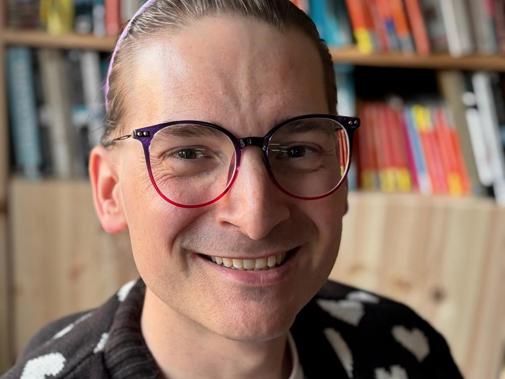The LGBTQ+ acronym promotes solidarity, but it also risks masking the distinct experiences of different groups. ‘Queer’ can be a unifying umbrella term, yet differences matter – and bisexual doctors face specific challenges.
In GMC EDI data, 96.1% of doctors reporting their sexuality identify as straight, 2% as gay or lesbian, 1.4% as bisexual, and 0.5% as ‘other’. The low reported proportion may reflect not only demographics, but also a reluctance to be open. In a 2022 BMA survey of sexual orientation and gender identity in medicine, 83% of heterosexual respondents were open about their sexuality with everyone at work, compared with 62% of gay and 55% of lesbian respondents. However, the equivalent figure for bisexual respondents was just 25%.
Why the gap? Several overlapping issues may help explain it:
– Bisexual invisibility: Our society is still largely heteronormative, meaning it’s assumed people are straight by default. Even within queer spaces, bisexual people may be presumed gay or lesbian based on their current partner. Representation matters, and invisibility reinforces stigma
– Bi-erasure: Those who do come out may be dismissed as ‘confused’, ‘experimenting’, or ‘going through a phase’. Men may be assumed to be ‘really’ gay; women, ‘really’ straight
– Biphobia: Persistent stereotypes portray bisexual people as promiscuous, unfaithful, or vectors for STIs – attitudes that can silence disclosure
– ‘Straight-passing privilege’: Bisexuals are sometimes accused of being able to ‘opt out’ of queerness by dating different-sex partners, and as a result may not feel accepted or welcome in LGBTQ+ spaces. Yet research shows bisexual people face higher rates of mental ill health than both heterosexual and gay/lesbian peers.
These challenges don’t exist in isolation. How – and whether – you discuss your sexuality might be influenced by your gender, career stage, ethnicity, disability, neurodivergence, religion, or class. Data shows, for example, that female doctors are twice as likely to identify as bisexual than lesbian, whereas male doctors are three times more likely to identify as gay than bisexual (NHS workforce statistics, March 2025).
There’s an interesting generational difference too – reflecting larger cultural changes, foundation year 1 doctors are 50% more likely to describe themselves as gay/lesbian than consultant colleagues, but 10 times more likely to identify as bisexual.
I have identified as bisexual since before I began my career in medicine, and have always been open about my sexuality when it comes up. Even though I work in an open and inclusive environment with colleagues I trust (a privilege many doctors don’t have) I suspect that most of them assume I am straight. Instead of feeling like an advantage, this leaves me feeling unseen and not fully recognised as my authentic self at work.
Medicine as a profession remains deeply heteronormative and slow to change. Cultures of silence and narrow constructions of ‘professionalism’ affect not only doctors’ wellbeing but also the inclusivity of the wider workplace.
So this week, I invite colleagues to reflect:
– What assumptions do I make about others’ identities?
– How can I help create a culture where diversity – visible and invisible – is recognised and valued?
Small acts of openness and allyship can shift workplace culture. For bisexual doctors, greater visibility isn’t just symbolic: it’s a step toward belonging.
Alex Robertson (they/them) is a GPST2 in the West Midlands

